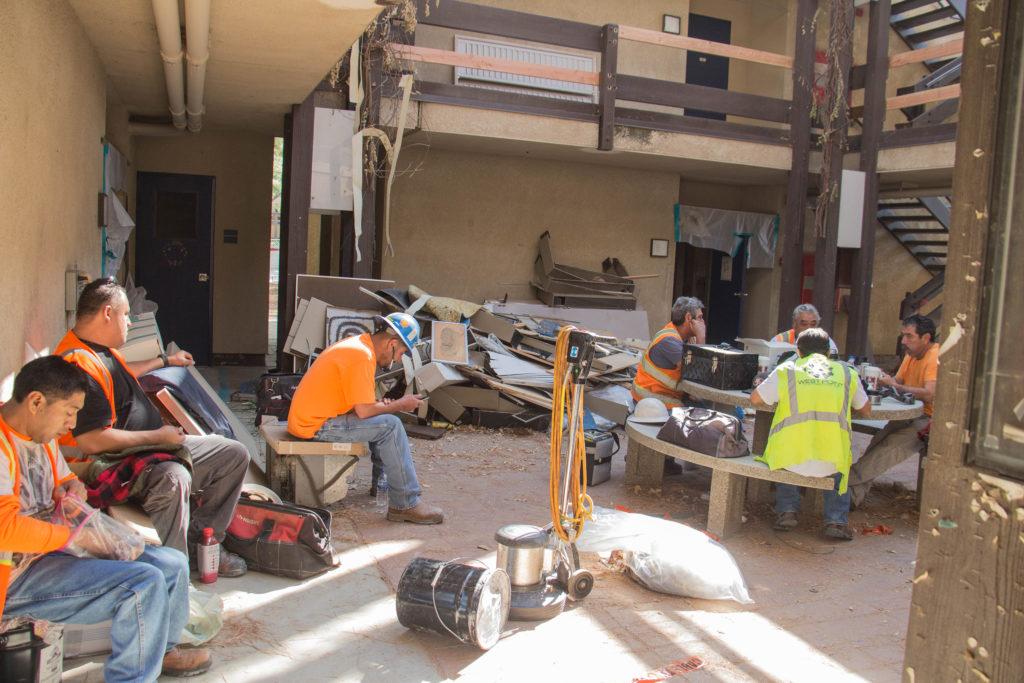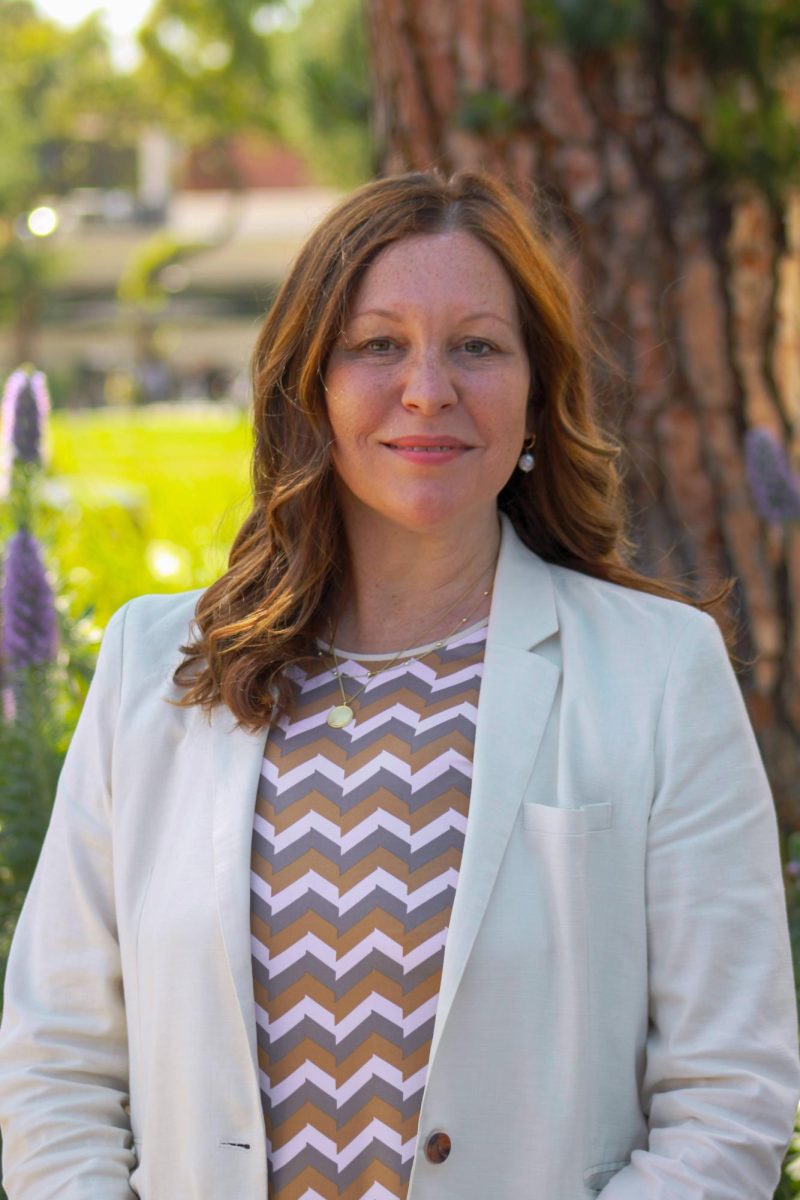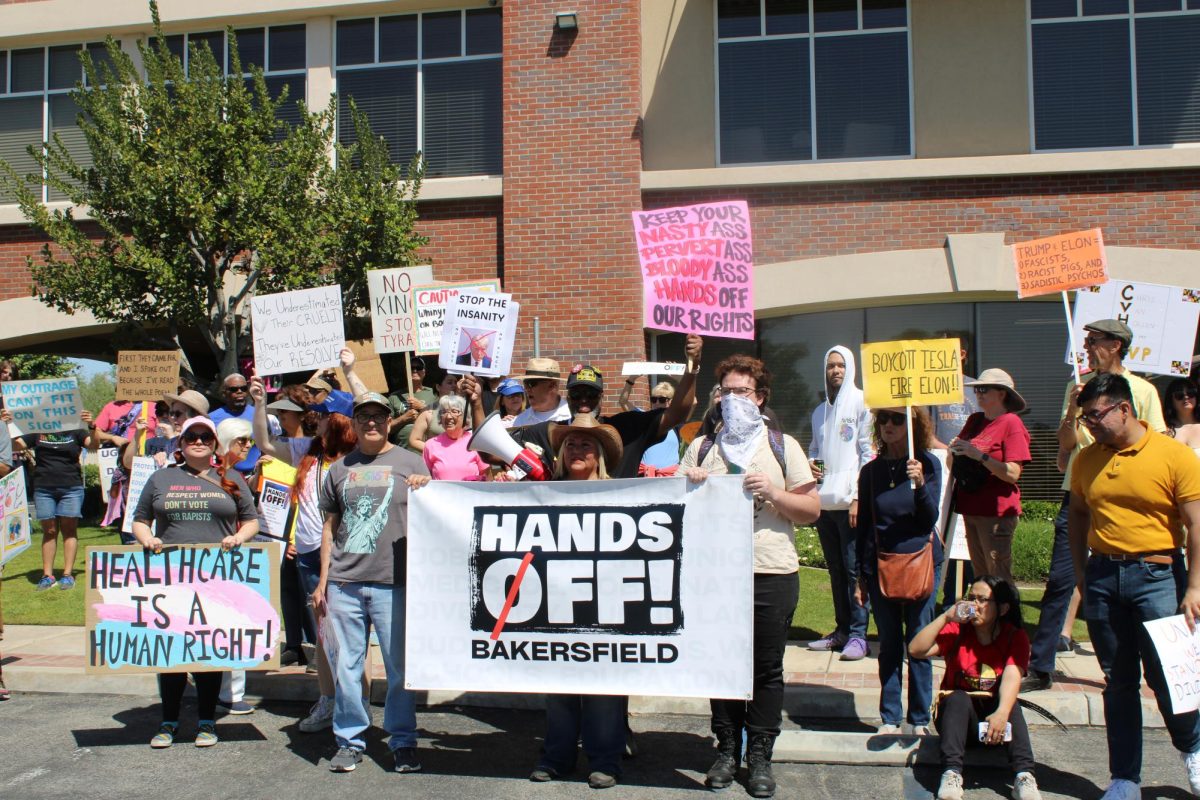By Runa Lemminn
News Editor
The CSU Bakersfield campus is about to lose a building, and gain some green space for students in its place.
The old Faculty Towers building has now gone through its pre-demolition process and is almost ready for demolition.
The pre-demolition process has been going according to plan, even with several steps involved.
One of the first steps was to remove some of the door hardware, signs, and anything that could be re-used from inside the building.
The process also involves getting rid of asbestos from inside the building.
Patrick Jacobs, Associate Vice President of Facilities Management said that a licensed asbestos removal company is removing the “hot” areas. The company started at the ground and worked up all three floors.
“The asbestos, I want to make very clear (of this), is not friable, it is contained, which is perfectly legal to have within buildings,” said Jacobs.
“However, when you go to demolish the buildings, you have to dispose of the asbestos containing materials separately and differently than you do the rest of the construction items.”
It’s not as easy as it seems. Getting rid of those materials is costly, too.
“You can’t dispose of them in a landfill,” said Jacobs.
Cody Anderson, Project Manager of SC Anderson, Inc., said there was a team of about six people working on the asbestos abatement crew.
“Everything is double-bagged, and placed into a secured dumpster with a top on it and everything, and then trucked all the way to Arizona,” said Anderson.
The pre-demolition process also involves cutting off the all utilities that are currently running to the building.
“We’ve set aside the week of Oct. 23 to 27 to do what we call ‘cut and cap,’” said Anderson. “The cut and cap involves three different contractors, between our plumber, our telecommunications IT guys, and our electrician.”
Once the utilities have been cut off, the demolition process will begin.
George Corral, a junior majoring in criminal justice, said he’s hoping for a quiet and uneventful demolition of the building.
“If they had to do it during the week, maybe a slow and steady demolition would be nice,” said Corral.
Both Jacobs and Anderson said it would be a fairly quiet demolition process.
“No, we’re not going to blow the building up,” said Jacobs.
“Our intent is to make it as anti-climatic as possible,” said Anderson. ”Boring is safe, and safe is good.”
Anderson said it would take about two weeks to do the demolition, because cleaning up the site and removing the temporary fence and all the rubble from the building materials will take additional time.
“To bring the building down will take about a week, but we then have to haul off all of the material, and that’s kind of the time-consuming thing, as well as dig out the footings and the rest of the concrete,” said Anderson.
Not everything will be gone after the demolition.
Major trees will be kept throughout the demo, but all other vegetation will be removed.
Anderson said the goal is to hand the site back over to CSUB by Nov. 17.
At that point, the site will be a dirt-graded field, with the major trees still there.
However, that is not the end of the project.
The area will eventually be turned into a green space for students and faculty to enjoy.
“We have begun working with our campus landscape architect on designing the future landscape of that area,” said Jacobs.
Once the drawings are complete, the landscaping process can begin.
“Our desire would be to get a landscape contractor in here after Anderson is done, sometime during the winter, and then come in and re-landscape that area.”
Jenni Newton, a senior majoring in child adolescent family studies, said she is looking forward to having more green space on campus, since the area around faculty towers is surrounded by a lot of concrete and other buildings.
“There’s quite a few buildings. There needs to be more space for people just to hang out, and study and relax,” said Newton.
Approximately 90 percent of the demolition was funded by state of California, through the CSU system. CSUB came up with the remainder.
Public Affairs and Communications Coordinator Shelby Parker stated in an email that the demolition cost is approximately $350,000.
“The demolition is a part of the Humanities Office Building. The total budget for that project is $8,185,000. Of that amount, $6,685,000 came from an allocation received from the Chancellor’s Office, and $1,500,000 came from campus reserves,” the email stated.

Photo by Andrew Paredez/ The Runner






